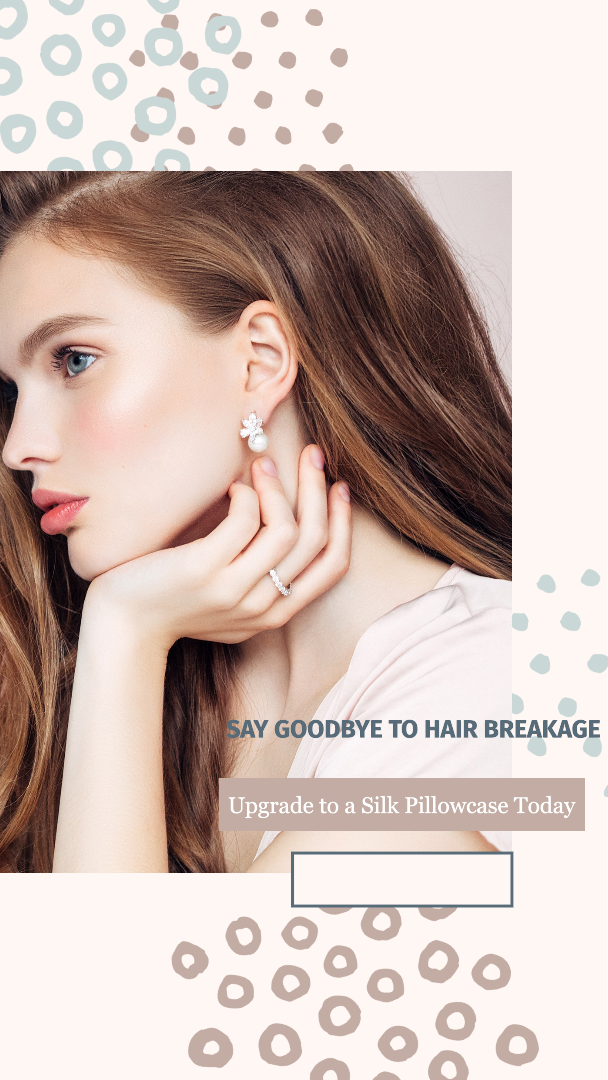When it comes to hair breakage prevention, most people focus on the products they use on their hair or their hair care routine. But did you know that the type of pillowcase you use can also play a significant role in preventing breakage?
Cotton pillowcases, which are the most common type of pillowcase, can actually cause friction and damage to your hair while you sleep. The rough surface of cotton can lead to tangles, knots, and breakage, particularly for those with curly or textured hair. In this article, we’ll explore why you should consider ditching your cotton pillowcase for a more hair-friendly option, and what alternatives you can choose from.
The Problem with Cotton Pillowcases
Cotton is a natural fiber that is breathable and comfortable for sleeping, but unfortunately, it’s not the best option for hair health. The rough surface of cotton can cause friction against your hair, leading to tangles, knots, and breakage. This is especially true for those with curly or textured hair, as the fibers of the hair are more susceptible to getting caught in the rough surface of cotton.
In addition, cotton pillowcases can also absorb moisture from your hair, leaving it dry and prone to breakage. This can be particularly problematic for those with natural or chemically-treated hair, as these hair types are often more susceptible to dryness and breakage.
Alternative Pillowcase Options
Thankfully, there are several alternatives to cotton pillowcases that can help prevent hair breakage and promote healthier hair
Silk Pillowcases
Silk pillowcases are one of the most popular alternatives to cotton, and for good reason. The smooth surface of silk allows your hair to glide over it, reducing friction and preventing tangles and breakage. In addition, silk is a natural fiber that is breathable and can help regulate temperature, keeping you cool in the summer and warm in the winter.
Silk pillowcases are also gentle on the skin, helping to prevent wrinkles and acne. However, it’s important to note that silk pillowcases can be more expensive than cotton, and may require special care when washing.
Satin Pillowcases
It is another type of pillowcases for those looking to prevent hair breakage. Satin is a synthetic material that has a smooth surface similar to silk, allowing hair to glide over it without causing friction or tangles. Satin pillowcases are also more affordable than silk, making them a great option for those on a budget.
Like silk, satin is also gentle on the skin, making it a good choice for those with sensitive skin. However, it’s important to note that satin can be more slippery than cotton, which may take some getting used to when it comes to sleeping.
Microfiber Pillowcases
This type of pillowcase are another option for those looking to prevent hair breakage. Microfiber is a synthetic material that is soft and smooth, and can help reduce friction and prevent tangles and breakage. Microfiber pillowcases are also affordable and easy to care for, making them a convenient option for those who don’t want to spend a lot of time and money on their bedding.
It’s important to note that not all microfiber is created equal, and some may be rougher than others. Be sure to choose a high-quality microfiber pillowcase to ensure the best results.
Conclusion
The type of pillowcase you use can play a significant role in preventing hair breakage and promoting healthier hair. Cotton pillowcases, while comfortable, can cause friction and tangles that can lead to breakage. Silk, satin, and microfiber pillowcases are all great alternatives that can help reduce friction and prevent breakage, while also being gentle on the skin.
While switching to a new pillowcase may seem like a small change, it can make a big difference in the health of your hair. In addition to using a pillowcase that is gentle on your hair, it is also important to follow other hair care practices that can prevent breakage, such as using the right hairbrush, avoiding heat styling, and using hair oils.
If you are experiencing significant hair breakage despite making changes to your hair care routine, it may be a good idea to consult with a dermatologist or trichologist. They can help identify any underlying health conditions or nutritional deficiencies that may be contributing to the problem and recommend appropriate treatments.
Hair transplant surgery is another option for those who have experienced significant hair loss or breakage. While the cost of hair transplant calculator surgery can vary depending on several factors, it can be a highly effective way to restore hair growth and improve the overall appearance of your hair.
In conclusion, preventing hair breakage requires a combination of proper hair care practices, a healthy diet, and using gentle hair care products. By taking steps to prevent breakage, you can promote healthier, stronger hair that looks and feels great.
If you want to learn more visit us at https://sohago.com/blog/

